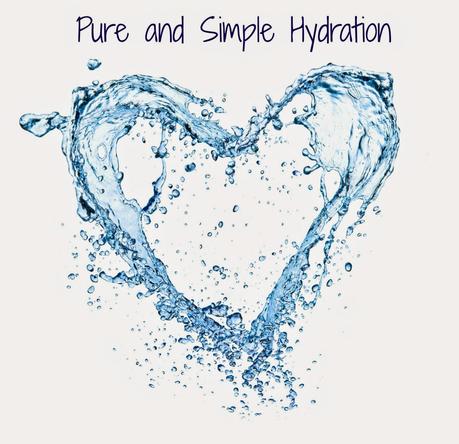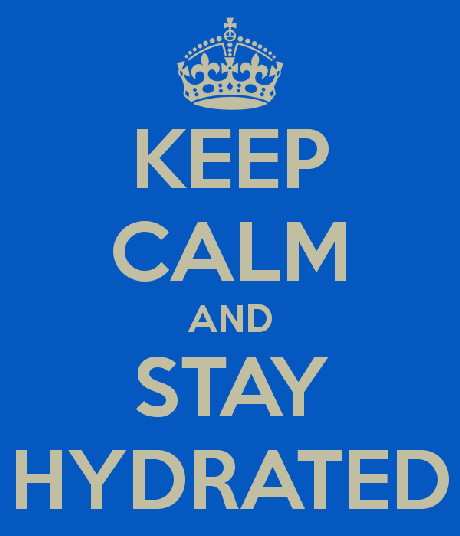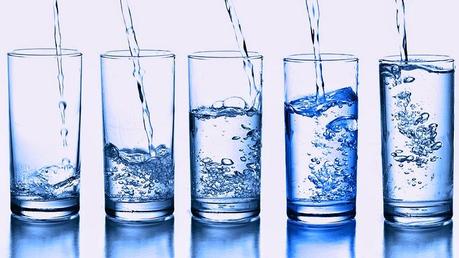
What causes dehydration and how is it impacting my body?
Anybody that has ever been involved in athletics has heard coaches preaching about adequate water consumption. Hydration is easily as important as nutrition when it comes to athletic performance. Because of the quick pace in which liquids are emptied from the stomach when compared to solids, taking in calories from liquid sources during exercise is your best bet.Dehydration occurs when fluid intake is well below sweat rate for a long period of time. This triggers the body to divert body fluids away from the digestive system to the skin for cooling and muscles for work production. Elite athletes can lose up to 1800 mL of water per hour of work. Though we might not be training at quite the same level as elite athletes, it is important to recognize how easy it is to lose fluid. As a competitive swimmer, it was easy to lose track of how much sweat was leaving the body because I was surrounded by water. It is nearly impossible to fully recover from exercise in a dehydrated state, so hydration during and post workout is crucial. The recommended fluid intake after working out is 500 mL (16 ounces) for every pound lost during exercise. Depending on your sport this may be very difficult to achieve in the first 30 minutes post exercise. Throughout the day you may need to consume up to 150% of the weight lost during exercise to keep up with your body’s demands throughout recovery.
How to determine your fluid intake needs
You will need to determine your ‘optimally hydrated’ body weight: weigh yourself in the morning before breakfast, and after drinking water to satisfy thirst. Do this for 3-4 days while you are doing less exercise. This will be your reference point to compare to post workouts. Following exercise try to return to your predetermined ‘optimally hydrated’ state quickly, and as early as possible before your next training session.What does it mean to ‘hold onto water weight’?
When fully hydrated and glycogen loaded, you carry ‘extra’ fluid. This means that muscle is being loaded with glycogen due to reduced training. Typically, for every gram of glycogen stored in the muscle, 2.6 grams of water are stored with it. Exercise uses this stored glycogen as fuel, and as it is expended the stored water is released. This release of fluid is helpful for the body at work, but these benefits are minimized by fluid losses such as sweat. Your optimal training body weight lies between your fully rested and post exercise body weight.
Muscle Cramps
Unfortunately, no one has been able to determine exactly what causes muscle cramps, but there are a couple of prevalent theories.I am sure many individuals who are, or have been involved in an aerobic sport have shared in all of the joys that come with cramps. As a swimmer I had the delight of experiencing many bouts with cramps, usually in the hamstrings or calves, often simultaneously in both legs. That sharp, stabbing, often excruciating pain that was followed by the development of a rock hard lump of useless muscle left me an immobile mess. Now as a coach I continue to see localized muscle cramps in my athletes and hope to offer more insight as to how they can prevent this pain for themselves. When I look back, I recall coaches offering the same advice: “you need to drink more water”, or “you need to eat more bananas”. In my mind theses suggestions made sense: more water because I am losing so much through sweat, and bananas to replenish potassium. This advice was pretty general, and as a youngster in debilitating pain I followed the advice, but found that I always struggled with leg cramps despite making these changes. It was not until I was nearly finished competing in the sport that I tried different cross training that incorporated Olympic and power lifting which helped me to develop strength and coordination that I could not develop in the water, eliminating the muscle imbalances that likely contributed to my cramps. This reasoning is supported by the neuromuscular control theory, which explains that strength imbalances are thought to play a large role in muscle cramping. Neuromuscular control can impact the muscles of the body: fatigue of untrained or underdeveloped muscle groups can cause disturbances in the central, and peripheral nervous system, and the skeletal muscle system causing muscles to cramp.
Exercise associated muscle cramps are most widely believed to be caused by electrolyte depletion or dehydration. In 2008 author Michael F. Bergeron published an article on the subject titled Muscle Cramps during Exercise-Is It Fatigue or Electrolyte Deficit? Bergeron found that deficiency of sodium and other electrolytes may lead to contracted interstitial fluid compartments, which may exacerbate the muscle cramping. According to this theory, “the increased blood plasmaosmolalityfrom sweating sodium losses causes a fluid shift from the interstitial space to the intervascular space, which causes the interstitial fluid compartment to deform and contributes to muscle hyperexcitability and risk of spontaneous muscle activity.” Because the loss of electrolytes is closely associated with fluid loss, I can see how my coaches assumed that it must be the loss of water that was causing my discomfort. Perhaps a pinch of salt in the water bottle may have helped my body manage the workload on these days.
Electrolytes: What are they and why do they matter?
The main electrolytes in the human body aresodium,potassium,calcium,magnesium,chloride,phosphate, andbicarbonate.Sodium is the main electrolyte found in extracellular fluid and is involved in fluid balance and blood pressure control. These ions help regulate blood pH and are critical for nerve and musclefunction. Both muscle tissue and neurons are considered electric tissues of the body. Muscles and neurons are activated by electrolyte shifts between fluid compartments. A muscle contraction needs calcium, sodium and potassium to be present.An imbalance in these electrolytes can lead to either weak muscle contractions, or muscles that contract too severely (cramp).As mentioned by Bergeron, hyponatremia (low sodium) can be caused by the excessive consumption of fluids low in sodium, and can actually trigger or aggravate cramps. So yes, drinking too much water can actually have a detrimental effect on your workouts. It is important to stay hydrated, but also to replenish electrolytes.

How to Fight Hyponatremia
Many people swear by sports drinks when they exercise, but those of us who believe in a whole food or paleo type diet do not agree with the ingredients that can be found in drinks such as Gatorade or Powerade. To address the needs of a workout that lasts longer than 1.5 hours, steady consistent intake of carbohydrates, water, and sodium are crucial, and should be taken in as fluid. Not only is this a more convenient method, but it will also be used more rapidly when compared to solid foods. Try adding 1/4 to 1/2 teaspoon of sea salt with a lemon to your water bottle while you workout, or try making your own electrolyte drink with the recipe below.
Simple Homemade Electrolyte Drink
27 ounces waterJuice from 1/2 - 1 Lemon
3-4 slices fresh ginger
1/4 - 1/2 tsp sea salt (we recommend this brand)
1.5-2 Tbsp Local Raw Honey (like this kind)
Well there you have it everyone. Everything you ever wanted to know about hydration and exercise. I hope you learned something that will help you. If you have any questions please feel free to contact me!
